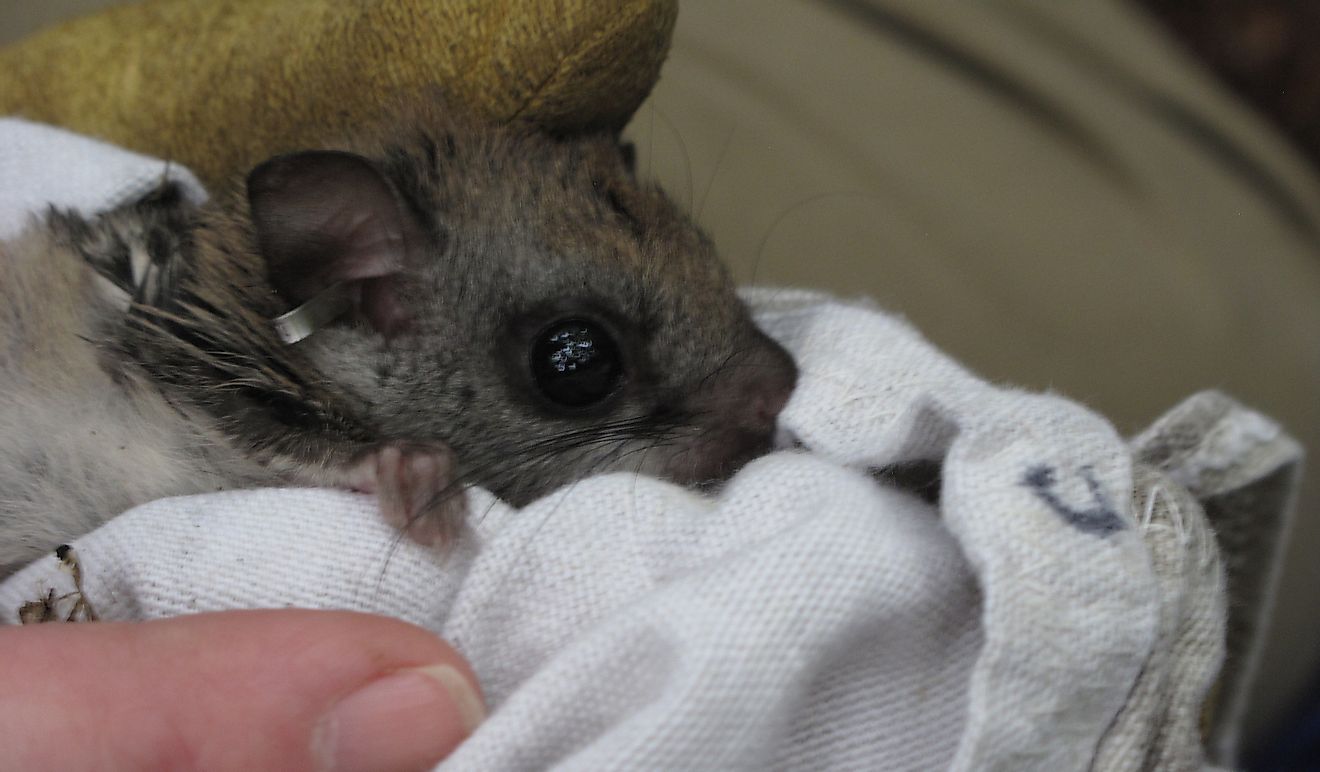Northern Flying Squirrel Facts: Animals of North America

5. Physical Description
The Northern Flying Squirrel (Glaucomys sabrinus), along with its slightly smaller counterpart to the south, is one of only two species of flying squirrels found on the North American continent. The Northern Flying Squirrel’s range extends from Alaska in the Northwest, to Nova Scotia in the Northeast, southward to the Southern Appalachians, westward to California, and back up the Pacific Coast to Alaska. Most members of the species are strictly nocturnal.
4. Diet
The diet of tis high-flying rodent includes a variety of vegetarian fare, though at times they may eat carrion of other small birds and animals, as well as eggs and insects. Their favorite foods, however, are fruits, plant sap, seeds, grains, nuts, and a variety of lichens and fungi. Northern Flying Squirrels source most of their food via foraging activities, and may cache or stock up on food supplies to protect against times of food insecurity. In eating fungi and fruits, they also help spread their respective seeds and spores.
3. Habitat and Range
The main natural predators of Northern Flying Squirrels include owls and other birds of prey, coyotes, weasels, and feral cats. Although not generally hunted directly, they are threatened by humans as well, as they are sensitive to the effects of habitat degradation, and often become ensnared in traps set by fur traders intended for other animals. Though not vulnerable throughout much of their natural range, they have at times been considered as such in the Southern Appalachians due to forestry and land development practices therein. In North Carolina and Virginia, certain subspecies as a whole have become endangered as well, and their protection is covered by US federal legislation.
2. Behavior
Northern Flying Squirrels have received their names due to their unique abilities to glide across the air, facilitated by attachments of folds of skin between their bodies and appendages known as “patagium”. These glides may cover as much as 80 feet in distance traveled in a single flight. Across much of their range, they show a preference for building nests and living in conifers at higher elevations, such as in the Appalachian, Rocky, and Sierra Nevada Mountains, and in the Black Hills of South Dakota. These nests at times may be as high as 60 feet off the ground to facilitate longer glides. Their nests are normally constructed from twigs, leaves, and other light, dead plant matter. Northern Flying Squirrels are most active at night so as to avoid predation. It should be pointed out though this is less effective in areas with large numbers of nocturnal predators, such as owls, for which they are an important prey species.
1. Reproduction
Flying squirrels breed once yearly over the course of a season that lasts between March and May. The Northern Flying Squirrels’ numbers of offspring can range from 1 to 6 per litter. Their gestation period Is around 40 days, and young are typically weaned by 2 months after birth. Young Northern Flying Squirrels become independent from their mothers at 3 months, and then go on to live more or less on their own. The average age to reach sexual maturity is a little less than a year in females, and right at 1 year in males. In the wild, Northern Flying squirrels’ lifespans normally do not exceed 4 years.







